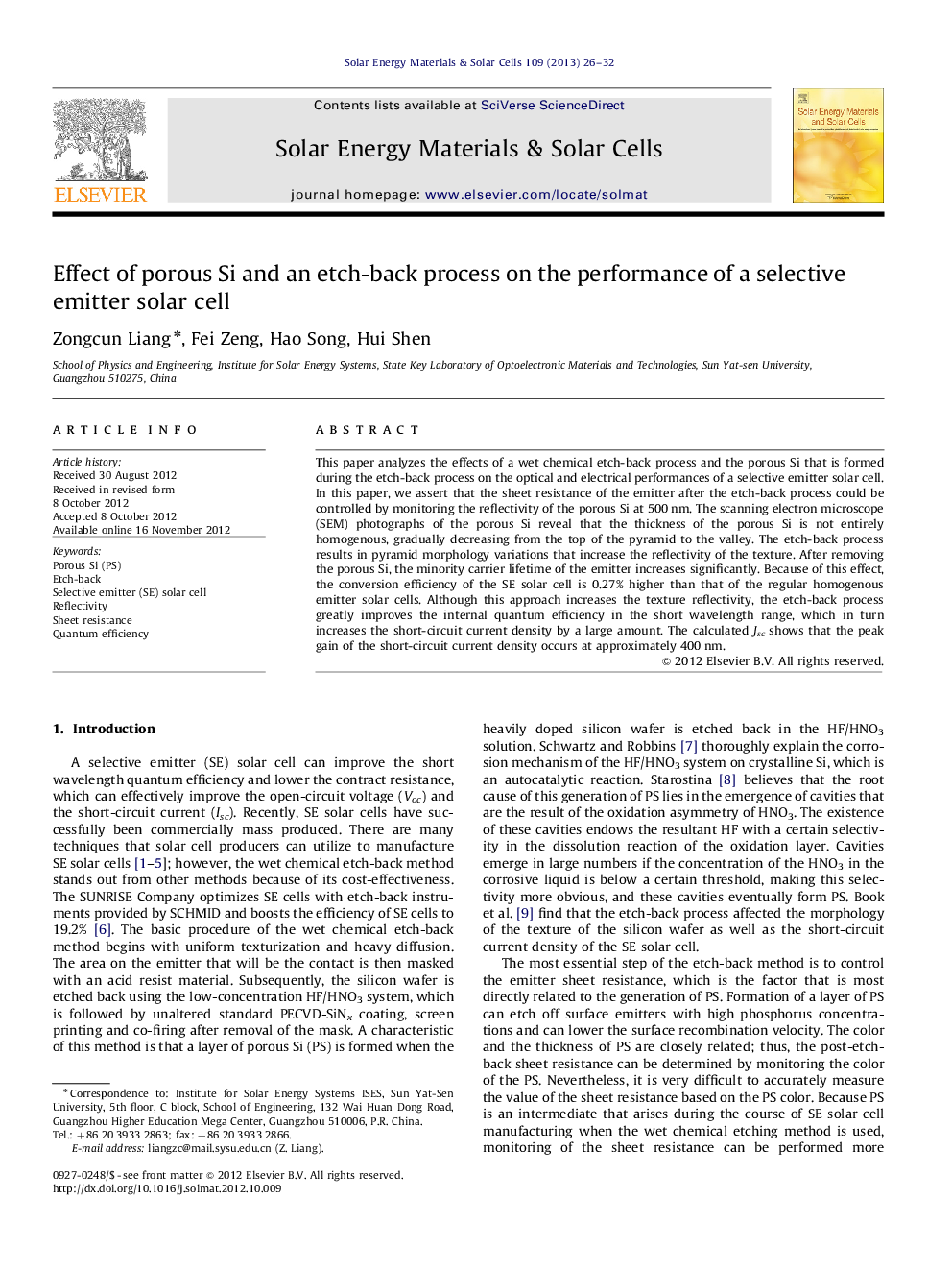| Article ID | Journal | Published Year | Pages | File Type |
|---|---|---|---|---|
| 78410 | Solar Energy Materials and Solar Cells | 2013 | 7 Pages |
This paper analyzes the effects of a wet chemical etch-back process and the porous Si that is formed during the etch-back process on the optical and electrical performances of a selective emitter solar cell. In this paper, we assert that the sheet resistance of the emitter after the etch-back process could be controlled by monitoring the reflectivity of the porous Si at 500 nm. The scanning electron microscope (SEM) photographs of the porous Si reveal that the thickness of the porous Si is not entirely homogenous, gradually decreasing from the top of the pyramid to the valley. The etch-back process results in pyramid morphology variations that increase the reflectivity of the texture. After removing the porous Si, the minority carrier lifetime of the emitter increases significantly. Because of this effect, the conversion efficiency of the SE solar cell is 0.27% higher than that of the regular homogenous emitter solar cells. Although this approach increases the texture reflectivity, the etch-back process greatly improves the internal quantum efficiency in the short wavelength range, which in turn increases the short-circuit current density by a large amount. The calculated Jsc shows that the peak gain of the short-circuit current density occurs at approximately 400 nm.
► The emitter sheet resistance keeps linear relationship with reflectivity of PS at 500 nm. ► The thickness of PS gradually goes down from the top of the pyramid to the valley. ► The morphology variation of the pyramid results in the increase of surface reflectivity. ► Etch-back process improves internal quantum efficiency in short wavelength range. ► The calculated Jsc shows that the peak of Jsc gain occurs at about 400 nm.
